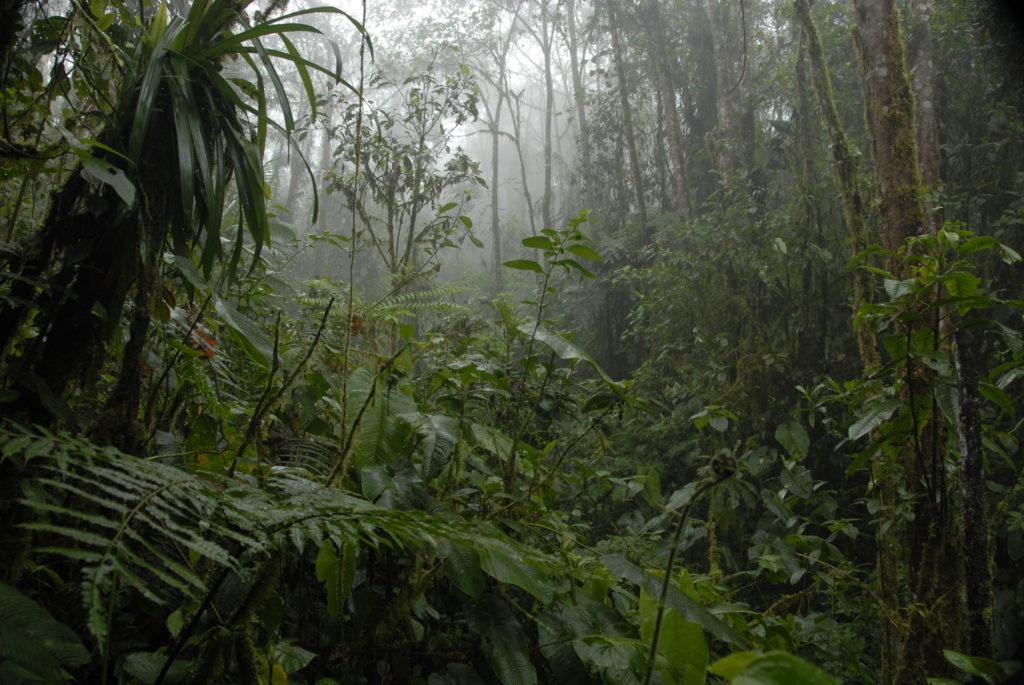Scientists have discovered a frog in Ecuador that can do what no other vertebrate has ever been documented to do—rapidly change skin texture from smooth to spiny. Researchers from Reserva Las Gralarias, Universidad Indoamérica and Tropical Herping in Ecuador revealed their findings today* in the Zoological Journal of the Linnean Society, challenging the traditional scientific knowledge and underscoring the critical need for habitat protection in the Ecuadorian Andes. Farming practices, urban sprawl and mining continue to put pressure on the Ecuadorian cloud forests.
“These types of new discoveries, those that defy—and improve—our understanding of the natural world, are only possible as long as we protect the most biodiverse corners of our planet,” said Robin Moore, conservation officer at the Amphibian Survival Alliance. “If we close the door to new discoveries, we may never be able to fully understand the extent of what we’ve lost.”
Katherine Krynak, a PhD student at Case Western Reserve University and her husband Tim Krynak, project manager at Cleveland Metroparks Natural Resources Division, discovered the new species, called the Mutable rainfrog (Pristimantis mutabilis), in 2006 at nature preserve Reserva Las Gralarias. The couple nicknamed the amphibian the “punk rocker” frog for its thorn-like spines. It wasn’t until three years later that the couple discovered the species’ secret shape-shifting skills, which may help the marble-size frog be better camouflaged in its mossy surroundings.
“Discovering a new species is incredible enough,” Katherine said. “You wouldn’t think anything could top that. And then you discover that it also changes shape, suddenly growing spines that then disappear. I just kept asking ‘did that really just happen?’”

The papers’ authors worked to confirm that the Mutable frog is a new species by conducting morphological and genetic tests and studying the frogs’ calls. They found that the Sobetes robber frog (Pristimantis sobetes), a related species, can change its skin texture, too. According to paper co-author Carl R. Hutter, from the University of Kansas, the next steps in the research are to determine if additional species share this ability and then to look for the physiological mechanisms that allow the species to do what scientists once thought only invertebrates such as octopuses and cuttlefish could do.
The Krynaks helped form Las Gralarias Foundation, an Amphibian Survival Alliance partner, to support the reserve’s conservation efforts. They plan to continue surveying Mutable rain frogs and to work with fellow researchers to document their behavior, lifecycle, and to estimate their population, all in effort to better conserve both this paradigm-shifting species and its habitat.
The paper’s first and lead author is Juan M. Guayasamin, from Universidad Tecnológica Indoamérica, Ecuador. The fifth author of the paper is Jamie Culebras, a member of Tropical Herping.
The Mutable rainfrog (Pristimantis mutabilis) was the first species to do something no other vertebrate has been documented to do—change texture from smooth to spiky within minutes. (Left photo by Juan Guayasamin; right photo by Lucas Bustamante; courtesy of the Zoological Journal of the Linnean Society).

Above: The Mutable rainfrog was discovered in the humid, mossy cloud forest habitat in Ecuador’s Reserva Las Gralarias, an Amphibian Survival Alliance partner (photo by Timothy J. Krynak).
Media Enquiries:
Candace Hansen-Hendrikx
Amphibian Survival Alliance
cmhansen@amphibians.org
